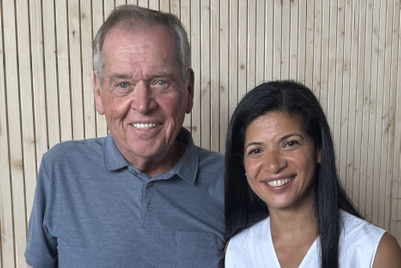
Jean Yoon, research director of the customised research division at TNS Korea, says cosmetics sales have outperformed the overall economy, which dropped four per cent year on year in the first quarter and 2.2 per cent in the second. In contrast, Korea’s facial skincare and make-up sales enjoyed growth during those two quarters. According to TNS Worldpanel Korea, the cosmetics market grew 5.5 per cent in the first half of the year, with skincare up 3.3 per cent and colour make-up rising 12.9 per cent.
The disparity is even stronger for advertising. In the first half of the year, South Korea’s total adspend fell 19 per cent to 2.6 trillion won (US$2.2 billion), according to Nielsen Korea. Cosmetics adspend, meanwhile, increased by 14.9 per cent to 123.3 billion won.
Dominating the above-the-line landscape is Amore Pacific. Leading year’s top 10 cosmetics advertisers, it spent 43.3 billion won, compared to 24.7 billion won for second-placed LG Household & Healthcare and 17.2 billion won for third-ranked Procter & Gamble. All three spent nearly half or more of their budget on TV, as did Johnson & Johnson (sixth) and The Face Shop (seventh). Chanel (eighth) and LVMH (ninth), however, advertised nearly exclusively in magazines.
Much of this battle is for premium cosmetics. Euromonitor valued last year’s sales of this sector at 2.5 trillion won, or 38 per cent of the total spend on cosmetics and toiletries. Only skincare, valued at 2.7 trillion won, was higher.
Korea’s domestic cosmetic giants cover these two categories with brands at all price points. In premium cosmetics, for example, Amore Pacific’s three brands - Sulwhasoo, Hera and Amore Iope - give it a combined share of 42.8 per cent, according to Euromonitor. Likewise, LG’s four brands - Ohui, The History of Whoo, Isa Knox and Sooryehan - have a combined 18 per cent.
Foreign brands pale in comparison. L’Oréal Groupe’s Lancôme tops the list with 3.8 per cent, followed by Amway’s Artistry, Estée Lauder, Procter & Gamble’s SK-II and Shiseido.
“Korean brands are more responsive because the decision-makers are local,” says Jiyeon Lee, associate director, Synovate Korea. “This is important because the market is fast. A brand pops up, and in a short time it is big, but it disappears just as quickly.”
Lee adds: “It is accelerated by the internet. Korea is one of the world’s most connected countries. Information is at everyone’s fingertips. People read the comments on blogs and social networks.”
What’s more, South Korea is believed to be one of the world’s most expensive markets for imported cosmetics. Last year, the Korea Times reported that brand owners normally marked up prices four to five times wholesale. However, restrictions on imports have been lifted, and prices of foreign brands may decline as a result.
Both Lee and TNS’ Yoon describe Korea’s cosmetic market as increasingly polarised. The economy is certainly a driver, but so was the devaluation of the won in the fourth quarter of last year. “Duty-free shoppers switched to department stores, and there was a 17.7 per cent increase in that channel,” says Yoon. “Some premium brands saw increased sales of more than 20 per cent in the first half of 2008.”
Japanese tourists were part of this trend, and Tokyo travel agents began designing Seoul shopping trips for women seeking bargains on top Korean brand cosmetics.
At the same time, however, there has been a jump in sales in budget channels. The Face Shop, a maker of low-priced cosmetics, saw
double-digit growth in Korea last year, according to Euromonitor. “Wholesale marts, low-priced brand shops and TV home-shopping also grew by double-digit percentages,” says Yoon.
“Particularly in the case of television home shopping, inexpensive colour make-up in convenience packs doubled in sales.”
Got a view?
Email [email protected]
This article was originally published in 3 December 2009 issue of Media.


.jpg&h=334&w=500&q=100&v=20250320&c=1)
.jpg&h=334&w=500&q=100&v=20250320&c=1)

.png&h=334&w=500&q=100&v=20250320&c=1)

.png&h=334&w=500&q=100&v=20250320&c=1)

.jpg&h=334&w=500&q=100&v=20250320&c=1)




.jpg&h=268&w=401&q=100&v=20250320&c=1)




